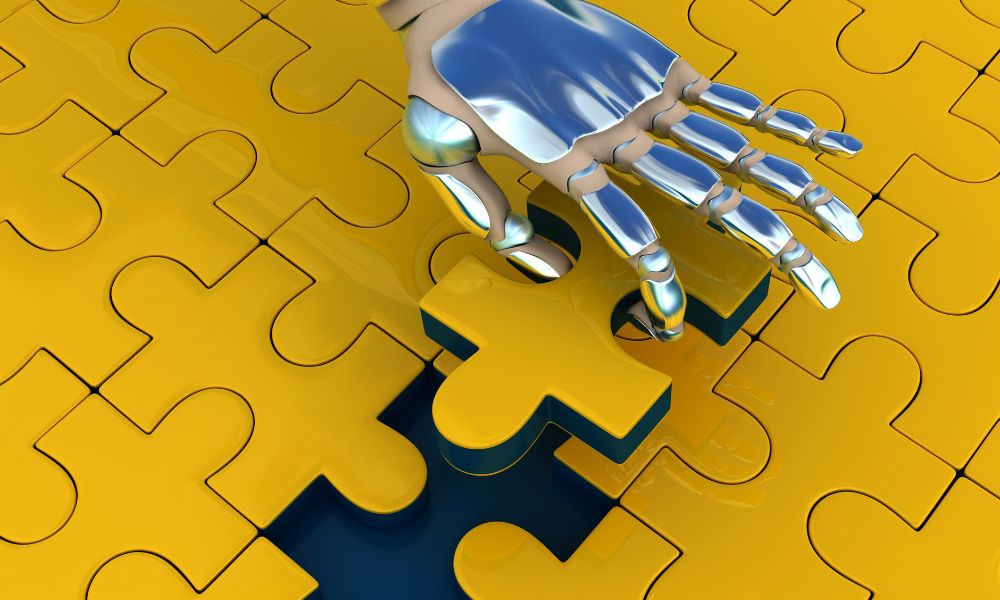Artificial intelligence is increasingly making its way into HR departments. In Poland, we are only beginning to explore its potential, but the trend is irreversible. AI-enhanced ATS systems scan CVs, analyze candidate responses, and even try to predict who will best fit the company’s culture. Yet this raises important questions: how far can automation go? And in the pursuit of efficiency, are we losing what truly matters in recruitment – the human perspective?
AI-based systems go far beyond classic CV filtering. More and more often, we see solutions that:
- analyze how a candidate responds during an online interview (speech tempo, word choice, even facial expressions),
- create short competency profiles by comparing the candidate’s experience with other applications,
- predict potential career paths based on previous roles and skills,
- support managers in assessing team “fit.”
These tools save recruiters time and allow them to focus on a smaller pool of top candidates. For companies hiring hundreds of people a year, this makes a significant difference – less manual work, faster decisions, and reduced costs.
The global vs. Polish perspective
In markets such as the U.S. and the U.K., AI in recruitment is becoming increasingly common – especially in large organizations. Algorithms decide which CVs move to the next stage, and chatbots assist candidates by answering frequent questions.
In Poland, we are still learning to adopt this approach. Many companies use basic ATS systems, but full integration with AI is just beginning.
On one hand, this is good news – we can learn from others’ mistakes and avoid issues that have already been identified. On the other, it raises a question: will Polish companies be able to keep up with the global pace of change?
Candidate perspective
From a candidate’s point of view, AI in recruitment has two sides.
Positive:
- decisions are made faster,
- communication becomes more structured,
- the risk of a CV being lost among others is reduced.
Negative:
- the process may feel too impersonal,
- candidates may feel that no one has truly reviewed their experience,
- algorithms may reject unconventional applicants who could bring real value to the organization.
Ultimately, it’s the balance between efficiency and genuine connection that determines how a company is perceived as an employer.
The limits of trust in machines
AI relies on data – and data can be biased. If a system “learns” from past recruitment examples, it can replicate existing prejudices (e.g., favoring certain universities or industries). This risk is increasingly discussed across Europe.
Legal regulations also play a role. The EU’s AI Act, which is now coming into force, classifies AI systems used in recruitment as high-risk tools. This means greater transparency requirements – companies will have to explain what criteria the algorithms considered and on what basis decisions were made.
The human role in recruitment
Automation does not mean eliminating recruiters. On the contrary – their role may become even more critical. AI excels at data analysis and repetitive tasks, but it cannot replace the ability to build relationships, interpret nuances, or assess motivation.
Companies achieving the best results treat AI as a support tool rather than a replacement. This hybrid model lets technology handle administration and analytics, while recruiters focus on advising and making strategic decisions.
What’s in it for companies and candidates?
For candidates, AI can make recruitment fairer and faster – no more “black box” where applications disappear. It also enables better matching of job offers to individual skills and aspirations.
For organizations, it means efficiency – shorter hiring cycles, more transparent processes, and optimized resources. But there’s a trade-off: the risk of losing valuable talent if candidates perceive the process as overly automated and lacking human interaction.
What’s next – is AI the answer?
Full automation of recruitment still seems unlikely. The most probable scenario is the evolution of hybrid models – where AI handles screening, analytics, and logistics, and humans take responsibility for key decisions and relationship-building.
The real question is not about technology but philosophy: do we want recruitment to be as fast and data-driven as possible, or should it remain an experience where candidates feel seen and valued?












